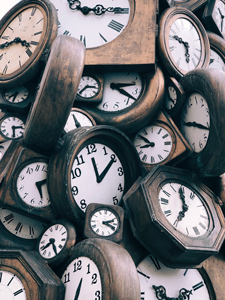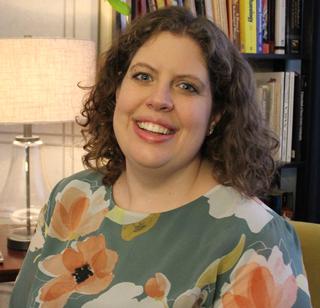
Welcome to the Hablitz Lab
Circadian physiology, pathology and therapeutics
 When people hear the word “circadian” the most common association is “sleep”. Yet… circadian rhythms are so much more than the sleep/wake cycle. Circadian (~24h) rhythms are evolutionarily conserved and persist in most cells, tissue, organs, physiology, and behavior. These rhythms ensure peak performance of an organism by synchronizing bodily processes (e.g. gene transcription, metabolism, blood pressure, cognition), then entraining these processes to environmental stimuli (light, food, drugs, etc.). Our research aims to expand the association of the word “circadian” from “sleep” to “necessary homeostasis”.
When people hear the word “circadian” the most common association is “sleep”. Yet… circadian rhythms are so much more than the sleep/wake cycle. Circadian (~24h) rhythms are evolutionarily conserved and persist in most cells, tissue, organs, physiology, and behavior. These rhythms ensure peak performance of an organism by synchronizing bodily processes (e.g. gene transcription, metabolism, blood pressure, cognition), then entraining these processes to environmental stimuli (light, food, drugs, etc.). Our research aims to expand the association of the word “circadian” from “sleep” to “necessary homeostasis”.
A common misconception is that finding a 24h rhythm is surprising. For example, together with Dr. Maiken Nedergaard, I found that the glymphatic system (the perivascular cleaning system of the brain) had a rhythm that increased during the sleep phase. We already knew glymphatic function increased during sleep, so it made sense that the brain “primed” itself to take on cerebrospinal fluid (CSF) to get ready to clean. The truly novel part of this study was the compensatory rhythm in CSF drainage from the skull to the mandibular lymph nodes in antiphase of the glymphatic rhythm, which indicated that the body buffered CSF between the brain and the periphery across the day. This brain-lymph crosstalk has direct implications for immune system function, brain-body signaling, and more. Our research goes beyond “defining a rhythm” and leverages basic tenants of circadian rhythms (they are conserved, endogenous, synchronize, and entrain) to gain new insights into fundamental biological processes.
If the purpose of circadian timing is to maintain homeostasis, it makes sense that disruption of these phase-locked and complex rhythms leads to pathology. For example: did you know that strokes are more severe during sleep? Or that chronic neuropathic pain symptoms flare up in the evening? Key pieces of epidemiological evidence like these suggest that maladaptive circadian timing may play a role in a whole host of diseases. Our lab investigates how circadian disruption may drive pathology, and how targeted chronotherapy may enable the body to re-time and heal itself.
 We aim to provide multidisciplinary training in a trainee-oriented space. Our projects span from cell-signaling, to structural changes in the tissue, basic neurobiological experiments, disease models and more. We take a “question first” approach, and let our science drive our techniques (such as: in vivo imaging, confocal microscopy, mass spectrometry, and beyond). Our team works with undergraduates, technicians, graduate students, postdocs, and faculty in the Center for Translational Neuromedicine in the Department of Neurology. By integrating training levels, trainees are exposed to all levels of science from benchwork to science writing to project development. Finally, science cannot be done alone, we are all in this together. This is why we value communication and trust, and strive to build a culture of mutual respect and growth both within our team and the science community at large.
We aim to provide multidisciplinary training in a trainee-oriented space. Our projects span from cell-signaling, to structural changes in the tissue, basic neurobiological experiments, disease models and more. We take a “question first” approach, and let our science drive our techniques (such as: in vivo imaging, confocal microscopy, mass spectrometry, and beyond). Our team works with undergraduates, technicians, graduate students, postdocs, and faculty in the Center for Translational Neuromedicine in the Department of Neurology. By integrating training levels, trainees are exposed to all levels of science from benchwork to science writing to project development. Finally, science cannot be done alone, we are all in this together. This is why we value communication and trust, and strive to build a culture of mutual respect and growth both within our team and the science community at large.
Hope to see you on “Team Rhythms” soon!

Lauren M. Hablitz, Ph.D.
Principal Investigator
- Circadian rhythms of macrophages are altered by the acidic tumor microenvironment.; EMBO reports. 2024 Oct 16.
- Loss of aquaporin-4 results in glymphatic system dysfunction via brain-wide interstitial fluid stagnation.; eLife; Vol 12. 2023 Feb 09.
- Reading to the end(foot): translational readthrough of AQP4 increases amyloid-β clearance.; Brain : a journal of neurology. 2022 Aug 25.
Contact Us
Hablitz Lab
Kornberg Medical Research Building 1-9915